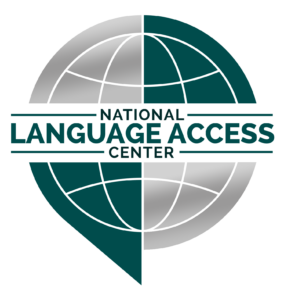How Technology is Changing the Landscape of Language Access
When I first stepped into the world of interpreting back in 200, the tools of the trade were decidedly low-tech. A notepad, a good pair of ears, and perhaps a bulky dictionary were the essentials. Fast forward to today, and the landscape has transformed dramatically. Technology is revolutionizing how we connect across languages, opening doors to greater access and efficiency than ever before.
The Rise of the Machines (AI and Language Services)
Artificial intelligence (AI) is making its presence felt in the language services industry. While it’s not about to replace human interpreters and translators altogether, AI-powered tools are proving invaluable in several ways:
Machine Translation: AI-driven translation engines are becoming increasingly sophisticated, capable of producing quick and relatively accurate translations of simple texts. This can be helpful for understanding the gist of a document or website, but it’s crucial to remember that human review is still essential for accuracy and nuance, especially in complex or sensitive contexts.
Automated Speech Recognition: AI is powering real-time speech recognition tools that can transcribe spoken language into text. This can be used to create captions for videos, generate transcripts of meetings, or even provide a rough draft for interpreters working in consecutive mode.
Natural Language Processing (NLP): NLP helps computers understand and process human language, enabling them to analyze text, identify sentiment, and extract key information. This can be used to improve the accuracy of machine translation, develop more sophisticated interpreting tools, and even assist in language learning.
Remote Interpreting: Connecting Across Distances
One of the most significant changes in recent years has been the rise of remote interpreting. This technology allows interpreters to connect with clients and service providers from anywhere in the world, via phone or video conferencing.
Video Remote Interpreting (VRI): VRI provides a visual connection, allowing interpreters to see the participants’ facial expressions and body language, which can be crucial for conveying non-verbal cues and cultural nuances. This is particularly beneficial in healthcare settings, where visual communication can enhance understanding and improve patient care.
Over-the-Phone Interpreting (OPI): OPI is a quick and convenient option for situations where a visual connection is not necessary. It’s often used for shorter interactions, such as customer service calls or brief medical consultations.
The Benefits of Technology in Language Access
These technological advancements offer numerous benefits:
Increased Accessibility: Remote interpreting allows organizations to access qualified interpreters for a wider range of languages, even in remote or underserved areas.
Improved Efficiency: Technology can streamline the process of scheduling and connecting with interpreters, reducing wait times and improving service delivery.
Cost-Effectiveness: Remote interpreting can be more cost-effective than traditional in-person interpreting, as it eliminates travel expenses and allows interpreters to serve multiple clients in a shorter timeframe.
Enhanced Accuracy: AI-powered tools can assist interpreters and translators in their work, improving accuracy and consistency.
The Human Element Remains Essential
While technology is transforming the landscape of language access, it’s important to remember that the human element remains crucial. Interpreters and translators bring not only language expertise but also cultural understanding, empathy, and the ability to navigate complex communication dynamics.
As technology continues to evolve, it’s likely to play an even greater role in facilitating language access. However, the most effective language services will always be those that combine the power of technology with the human touch.
Need Help?
Navigating the world of language access can be challenging, especially with the rapid advancements in technology. As someone with over two decades of experience in the field, I’m here to help. I’ve witnessed firsthand the evolution of interpreting, from the days of pen and paper to the sophisticated tools we have today. Whether you need an interpreter for a meeting, a translator for a document, or guidance on incorporating technology into your language access plan, I can help you bridge communication gaps and achieve your language access goals. Contact me today to discuss your specific needs.






